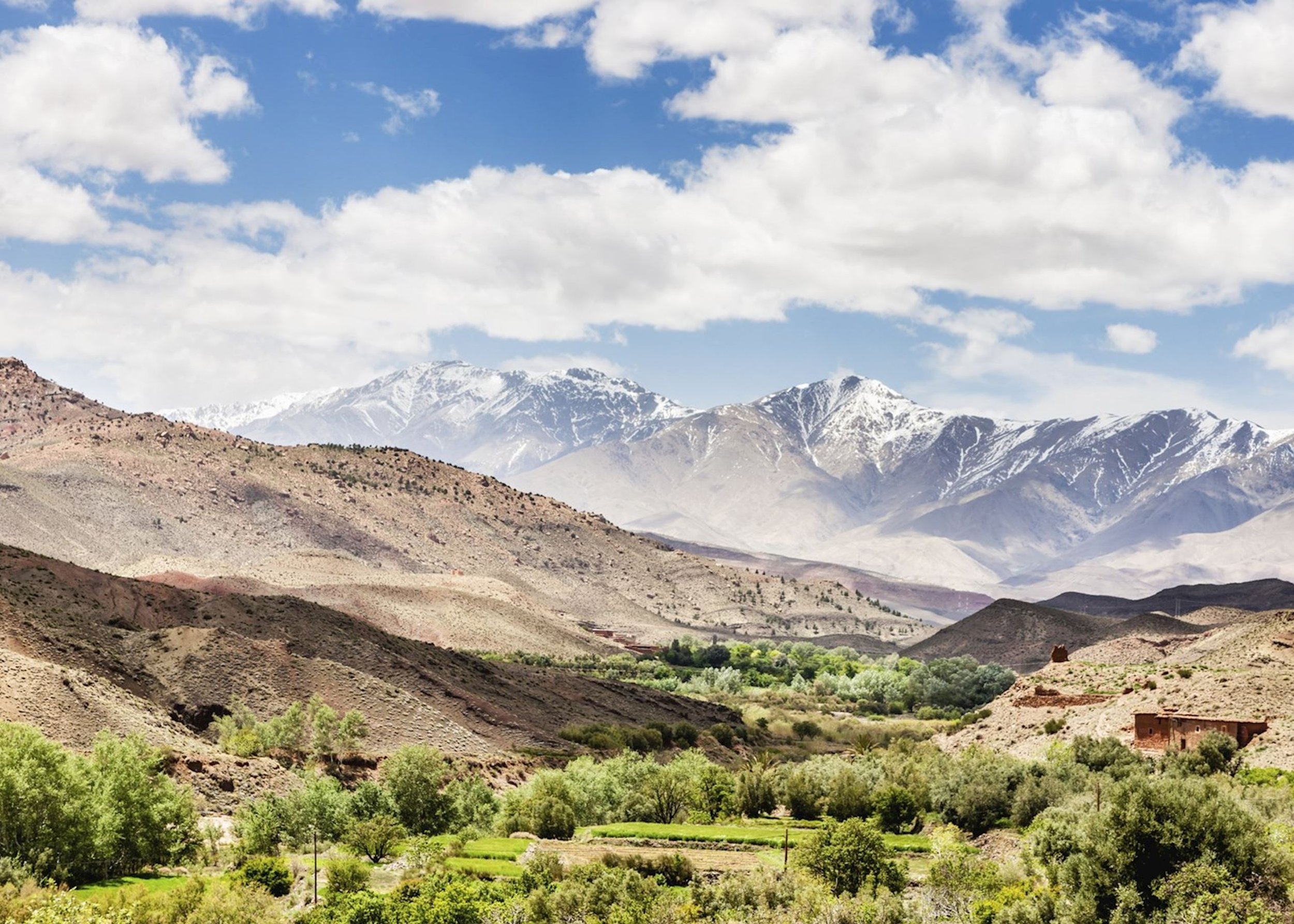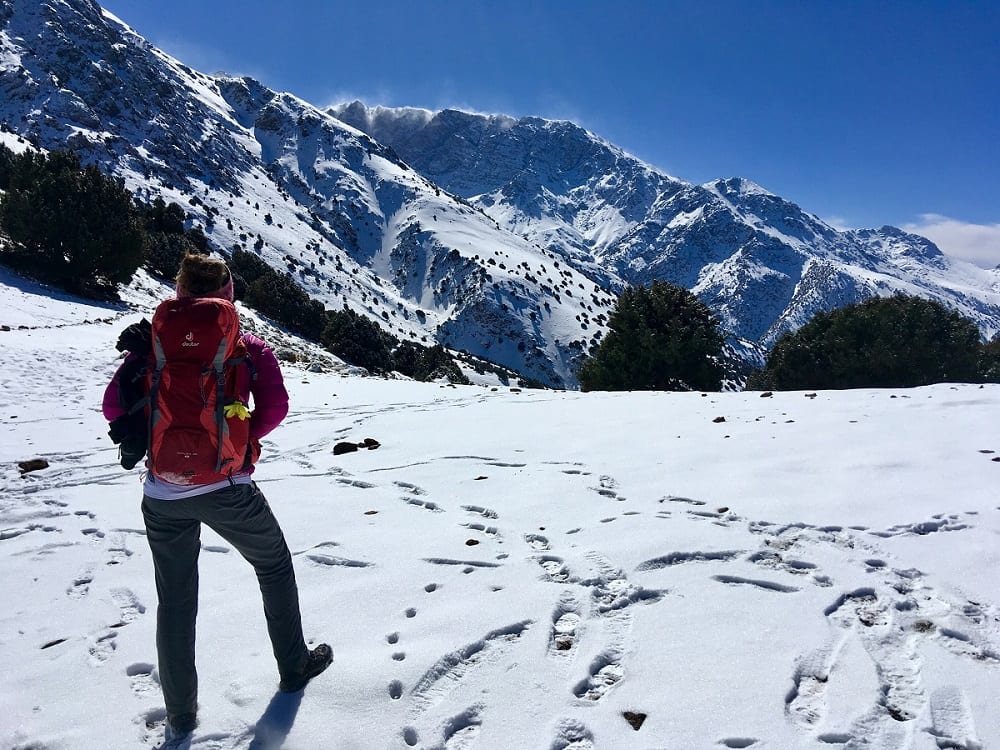Introduction to Trekking Atlas Mountains
Overview of the Atlas Mountains
The Atlas Mountains stretch majestically across Morocco, Algeria, and Tunisia, presenting a stunning backdrop for adventure seekers. With peaks soaring over 4,000 meters, this diverse mountain range is a treasure trove of natural beauty and cultural richness. You’ll find picturesque valleys, dramatic landscapes, and charming Berber villages, all of which invite you to explore and discover.
Benefits of Trekking in Atlas Mountains
Trekking in the Atlas Mountains offers numerous rewards:
- Breathtaking Views: Gaze upon panoramic vistas that change with each winding trail.
- Cultural Immersion: Connect with local Berber communities and savor their rich traditions.
- Physical Fitness: Challenge yourself while enhancing your physical stamina and well-being.
Embarking on an adventure here is not just a trek; it’s a path to unforgettable experiences!

Preparing for the Trek
Essential Gear and Equipment
To make your Atlas Mountains adventure a success, having the right gear is crucial. Trust me, packing wisely can make all the difference! Essential items include:
- Quality Hiking Boots: Invest in sturdy, waterproof boots for comfort on varied terrain.
- Layered Clothing: Opt for moisture-wicking and breathable layers to adapt to changing weather.
- Navigation Tools: A reliable map, compass, or GPS device will keep you on track.
Physical Fitness Requirements
Physical preparation is key to enjoying your trek fully. Aim for:
- Cardio Fitness: Engage in activities like running, cycling, or swimming for at least 30 minutes, three times a week.
- Strength Training: Focus on leg exercises, such as squats and lunges, to build endurance.
This preparation will ensure you tackle the mountains with confidence and enthusiasm!

Choosing the Right Trekking Route
Popular Trekking Routes in Atlas Mountains
The Atlas Mountains boast some remarkable trekking trails that cater to all levels of adventurers. Here are a few favorites:
- Toubkal Circuit: A challenging trek that leads to the summit of North Africa’s highest peak, Mount Toubkal.
- Ourika Valley: A beautiful route that meanders through lush landscapes and charming Berber villages.
- Imlil to Toubkal Base Camp: Perfect for those wanting a taste of higher altitudes with breathtaking vistas.
Factors to Consider Before Selecting a Route
Before you lace up your boots, consider these factors:
- Experience Level: Choose a trail that matches your trekking skills.
- Duration: Determine how many days you can dedicate to your journey.
- Scenic Preferences: Research the landscapes you’re eager to explore whether mountainous, lush valleys, or cultural sites.
Selecting the right route will elevate your trekking experience!

Safety Tips for Trekking in Atlas Mountains
Weather Conditions and Risks
The Atlas Mountains can surprise you with rapidly changing weather. When I trekked there last summer, I experienced sunshine, rain, and even a slight hailstorm all in one day! Therefore, staying informed about weather forecasts is crucial. Consider the following:
- Check Daily Forecasts: Conditions can vary significantly at different altitudes.
- Dress in Layers: This helps you regulate your body temperature as you move through varying climates.
- Monitor for Signs of Acute Mountain Sickness (AMS): Headaches, nausea, and dizziness are common as you ascend.
Emergency Response Planning
Preparation is your best ally! Make sure to:
- Share Your Itinerary: Always let someone know your trekking plans and estimated return.
- Carry a First Aid Kit: Include essentials for minor injuries.
- Know Local Emergency Numbers: Familiarize yourself with nearby healthcare facilities or rescue services.
These safety measures will enhance your confidence and keep you safe on the trails!

Enjoying the Scenery and Culture
Flora and Fauna of Atlas Mountains
Trekking through the Atlas Mountains is like walking through a vibrant natural gallery! The unique flora and fauna are truly a sight to behold. While exploring, you can encounter:
- Alpine Plants: Look out for the rare edelweiss and various colorful wildflowers that blanket the meadows.
- Wildlife: Keep your eyes peeled for Barbary macaques, ibex, and the stunning golden eagles soaring above.
Interacting with Local Communities
One of my favorite memories from my trek was engaging with the local Berber communities. Their warm hospitality and rich traditions added depth to my journey. Here’s how you can connect:
- Stay in Guesthouses: Experience authentic Berber life while enjoying local dishes.
- Learn Basic Arabic or Berber Phrases: A simple “Salam” (hello) will earn you big smiles!
These interactions will enrich your trek and create lasting memories!

Staying Healthy and Hydrated During the Trek
Hydration Strategies
Staying hydrated while trekking in the Atlas Mountains is crucial for your endurance and overall health. I learned this the hard way on my first trek, feeling fatigued because I neglected to drink enough water! Here are some effective hydration strategies:
- Drink Regularly: Aim for at least 2-3 liters of water per day, even if you’re not thirsty.
- Use a Hydration Pack: This makes it easy to sip during your trek without stopping.
- Carry Water Purification Tablets: To ensure safe drinking water from streams and rivers.
Dietary Considerations
Eating well fuels your adventure! Focus on:
- Balanced Meals: Incorporate carbs, proteins, and healthy fats, like nuts and dried fruits.
- High-Energy Snacks: Have quick snacks like granola bars ready for energy boosts while on the go.
By prioritizing hydration and nutrition, you’ll feel energized and ready to conquer the trails!

Navigating Challenging Terrain
Techniques for Uphill Climbing
Conquering the uphill trails of the Atlas Mountains can be quite the workout! I remember puffing through steep sections, but a few techniques helped me maintain my rhythm. Here’s what to keep in mind:
- Use Short Steps: Taking shorter strides conserves energy and reduces fatigue.
- Maintain a Steady Pace: Find a comfortable speed and stick to it to avoid burnout.
- Engage Your Core: Keeping your core activated provides stability as you climb.
Descending Safely
The descent can be just as tricky! To navigate downhill safely:
- Control Your Speed: Take it slow to prevent slips; letting gravity rush you can lead to falls.
- Use Your Poles: Trekking poles can provide stability and help reduce strain on your knees.
By mastering these techniques, you’ll navigate both ascents and descents like a pro, making your trekking experience even more enjoyable!

Capturing Memories Through Photography
Best Photography Spots in Atlas Mountains
When trekking in the Atlas Mountains, you’re surrounded by breathtaking landscapes just begging to be captured on camera! Some of my favorite spots include:
- Ait Benhaddou: This ancient clay village is a stunning backdrop, especially during sunset.
- Mount Toubkal: The view from the summit is nothing short of spectacular—perfect for bragging rights!
- Ouzoud Waterfalls: Capture the cascading water amidst a lush, green setting—truly a photographer’s paradise.
Tips for Taking Great Trekking Photos
Here are a few tips to enhance your photography skills while trekking:
- Golden Hour: Shoot during early morning or late afternoon for soft, beautiful lighting.
- Vary Your Angles: Experiment with different perspectives to create unique compositions.
- Capture Interactions: Don’t forget to photograph moments spent with locals or fellow trekkers for added memories.
With these tips and spots in mind, you’ll bring home stunning visuals to cherish!

Post-Trek Recovery and Relaxation
Stretching and Recovery Techniques
After an exhilarating trek through the Atlas Mountains, taking care of your body is crucial for a full recovery. I made it a point to stretch right after my adventures, and I felt so much better! Here are some recovery techniques:
- Gentle Stretching: Focus on your legs, back, and arms to release tension. Hold stretches for at least 30 seconds.
- Foam Rolling: A foam roller can work wonders on sore muscles—give it a try!
- Hydration and Nutrition: Replenish fluids and refuel your body with healthy, protein-rich snacks.
Enjoying Spa and Wellness Facilities in the Region
Indulging in post-trek relaxation is the cherry on top. Many places around the Atlas offer fantastic wellness options, including:
- Traditional Hammams: Experience a rejuvenating steam bath to unwind.
- Massage Therapy: Treat yourself to a deep tissue massage to alleviate soreness.
These self-care practices will leave you feeling refreshed and ready for your next adventure!



